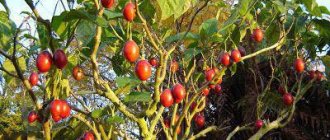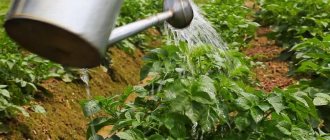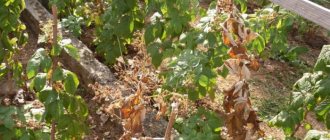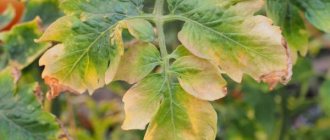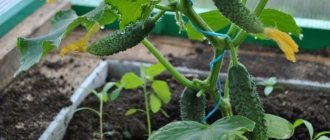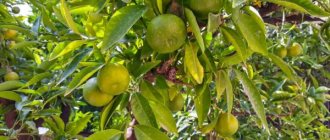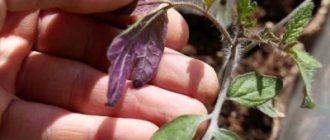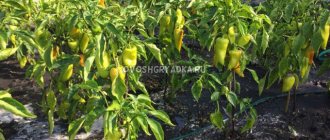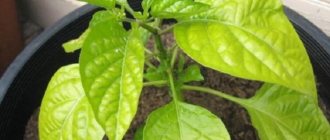Drying and freezing
The aboveground part of the popular culture consists of wide, powerful leaf blades “sitting” on long, succulent stems (petioles). Essentially, these are two different products that can be added to first and second courses, salads and even pie fillings. Every housewife uses those methods of preparing beet leaves for the winter that correspond to her plans and are suitable for subsequent preparation of dishes loved by family members. The easiest ways to preserve the product are drying and freezing.
When choosing recipes for preparing beet tops for the winter, you must take into account that the leaf blades soften much faster during heat treatment than the petioles. Therefore, they are advised to be prepared and stored separately from each other.
Greens intended for storage are often cut into small pieces, but leaf blades are sometimes frozen entirely: in winter they are used to prepare delicious cabbage rolls, which are in no way inferior to traditional cabbage rolls. Dry the tops in any available way: in the air, in a low-heat oven or a special dryer. For freezing, the cuttings and leaves are laid out in small portions in plastic bags (tightly, trying to remove excess air). Dried beet greens in a tightly closed container retain their taste and aroma throughout the year; frozen - until the next gardening season.
How to properly store workpieces
Rules for storing beet tops depend on the harvesting method:
- Pickled and canned ones are kept in the refrigerator or cellar.
- The dried ones are placed in paper bags or linen bags and hidden in a dark place.
- Frozen leaves are stored at temperatures from -5°C to -20°C. The lower the temperature, the longer the shelf life, on average 10 months.
- Tops pickled with vinegar are stored in the pantry or taken to the basement for safety.
Dressing for soup “Pyatiminutka”
This preparation comes in very handy when you need to quickly cook dinner for the whole family, and most importantly, replenish your supply of vitamins during the cold season.
Yield: 1 l (it is better to take jars with a volume of no more than 0.5 l)
Ingredients:
- beet leaves and petioles – 500 g;
- sorrel (leaves) – 300 g;
- dill and parsley (leaves) – 100 g each;
- water – 500 ml;
- rock salt – 1 tbsp. l.
Preparation:
- Wash the tops and other greens and chop finely.
- Boil water and dissolve salt in it.
- Place the raw material in the brine and boil for 5 minutes.
- Arrange the greens evenly among pre-sterilized jars.
- Add the broth to the containers, filling them to the top.
- Roll up the jars with hot lids, turn them over, wrap them and leave until cool.
The workpiece is stored indoors for 12 months, and in a cool place for up to 2 years.
Recipes for dishes with beet leaves
Beetroot tops are used to prepare many dishes familiar to us: soups, salads, cabbage rolls, dumplings, Ossetian pies. We have selected several popular and simple recipes.
Stuffed cabbage rolls
Ingredients:
- medium-sized beet leaves;
- minced meat – 600 g;
- long grain rice – 400 g;
- carrots – 2 pcs. (medium size);
- onion – 1 pc. (big);
- tomato paste – 3 tbsp. spoons;
- sour cream – 150 ml;
- salt, spices - to taste;
- sunflower oil for frying onions and carrots.
Preparation:
- Grate the carrots on a coarse grater, cut the onion into small cubes and lightly fry in oil.
- Boil the rice until half cooked, cool and mix with the minced meat.
- Add sautéed vegetables, salt and pepper to taste.
- Rinse the beet leaves under running water, remove the petioles and cut off the thick vein.
- Wrap the minced meat in each leaf, forming cabbage rolls.
- Place them tightly together in the pan.
- Make the dressing: mix sour cream with tomato paste, add salt and pour in hot water. Stir and pour over the cabbage rolls.
- Place a flat plate on top with a diameter smaller than the pan.
- Cover with a lid and simmer over low heat for about an hour.
Green salad
This salad is a real vitamin bomb.
Ingredients:
- tops - 1 bunch;
- wild garlic – 1 bunch;
- parsley and dill - 1 bunch each;
- cucumber – 1 pc.;
- paprika – 1 pc.;
- olive oil – 3 tbsp. spoons;
- apple cider vinegar – 1 tbsp. spoon;
- salt, black pepper - to taste.
Preparation:
- Wash the greens, dry and finely chop.
- Chop the cucumber and pepper as desired.
- Mix the salad ingredients in a bowl, add salt, olive oil and vinegar.
- Let it brew and serve.
Ingredients:
- meat on the bones for broth;
- water – 3 l;
- beet leaves - 2 bunches;
- potatoes – 3 pcs.;
- carrots – 1 pc.;
- onion – 1 pc.;
- vegetable oil – 2 tbsp. spoons;
- herbs, salt, spices - to taste.
Preparation:
- Rinse the meat and cover with water. Cook over low heat and skim off foam periodically. For pork, two hours of cooking is enough, for beef - three.
- Cut the potatoes into cubes or strips and soak in cold water. Grate the carrots and finely chop the onion. Sauté in vegetable oil until soft.
- Wash the beet leaves and finely chop them along with the petioles.
- Remove the meat and add the potatoes to the broth. Cook for 5-7 minutes, then add beet tops and sautéed vegetables.
- At the end of cooking, add salt, pepper and herbs. Serve with sour cream.
Dressing for borscht
Ingredients:
- beets – 1 kg;
- tops – 1 kg;
- onion – 1 kg;
- carrots – 1 kg;
- tomatoes – 1 kg;
- sugar and salt - to taste;
- vinegar 9% – 50 ml;
- refined oil – 3 tbsp. spoons.
Preparation:
- Grate the beets and carrots on a coarse grater or cut into strips.
- Chop the onions and tomatoes into medium cubes.
- Finely chop the washed tops.
- Pour oil into a thick-bottomed pan and add carrots. After 2-3 minutes, add the onion and sauté until soft.
- Add the beets, stir and pour in 200 ml of boiling water. Cover the pan with a lid and simmer the vegetables for 15 minutes.
- Add topstalks, tomatoes, 1 tbsp. spoon of sugar and salt. Stir and simmer for another 15 minutes.
- Taste the dressing and add vinegar, sugar and salt. Add beet leaves, stir and bring to a boil.
- Place the dressing in sterile containers and close the lids.
- Store in a cool place.
Reference. You can not use the root vegetable, but cook it only with beet leaves. The ingredients for refueling will be the same.
Borscht based on dressing
Ingredients:
- boiled water – 3 l;
- borscht dressing with beet tops – 500 ml;
- potatoes – 4 pcs.;
- salt, pepper, herbs - to taste;
- sour cream for serving;
- boiled eggs.
Dressing with beet leaves significantly reduces the cooking time of borscht. All that remains is to add chopped potatoes, salt and pepper to taste. Place greens, a tablespoon of sour cream and a boiled egg on each plate, if desired.
The total cooking time takes no more than 15-20 minutes, since the vegetables in the dressing are completely cooked.
If you are preparing borscht based on a dressing without beets, grate the root vegetable separately and add to the pan 10 minutes after the potatoes.
Advice. During the young beet season, prepare borscht from fresh ingredients. Instead of vinegar, use lemon juice.
Pickling
The use of such preservation is universal. The finished product can serve as a full-fledged side dish or a good addition to salads, main courses and soups.
Output : 1 l
Ingredients:
- beet tops – 600-700 g;
- garlic – 2-3 cloves;
- bay leaf – 1 pc.;
- black pepper – 8-10 peas;
- water – 1 l;
- sugar – 50-70 g;
- rock salt – 25 g;
- vinegar 9% – 50-70 ml.
Preparation:
- Cut the washed tops into arbitrary pieces. If the finished product will be used primarily as a garnish, the petioles can be cut into pieces 10-12 cm long, and the leaves can be divided into halves or left whole.
- Place raw materials and spices tightly into prepared jars.
- Boil a brine from water, salt and sugar. Remove the pan from the heat and add vinegar.
- Fill the jars with marinade to the top.
- Sterilize containers in a saucepan with slightly boiling water (with a volume of 0.5 liters - 10 minutes, 1 liter - 13-15 minutes).
- Roll up the jars with hot lids, turn them over, wrap them and leave until cool.
If you like spicier or spicy marinades, you can add any spices and herbs that are used in canning vegetables to the preparation. If stored in a cool cellar, the product will preserve the benefits and taste of beet tops for 2-2.5 years.
Pickled tops
For preparation you will need the following ingredients:
- 700 grams of tops;
- 1 liter of clean water;
- 100 milliliters of table vinegar;
- 90 grams of sugar;
- 1 piece bay leaf;
- 7 pieces of black peppercorns;
- 30 grams of salt.
The tops are washed and cut into long pieces, such that they fit into a jar without any problems. Sterilize the jars in an oven at one hundred degrees for an hour. Place the tops in ready-made, cooled jars.
Combine all other recipe ingredients in a saucepan and boil for ten minutes. Strain the marinade and pour hot liquid into jars with tops, after which they are again sterilized in boiling water. Next, the jars are rolled up and stored in a dark and cool place.
After this, you can roll up the jars and hide them for long-term storage in a dark and cool place. This pickling will look great on any dinner table in winter; you can cook many delicious and healthy dishes with cuttings. Bon appetit!
Pickling (fermentation)
Most often, not all the tops are salted, but only the petioles, but leaves can also be included in the preparation. The finished product contains all the beneficial substances that the raw materials are rich in, as well as lactic acid formed during the fermentation process. Salted beet stalks are considered an excellent independent snack and can be used in home cooking as a component of a wide variety of dishes. This is the best option for those housewives who do not like to pickle vegetables and put industrially produced food acids in homemade canned food.
General recommendations
Beet tops are a unique product, no less useful than the root crops of this crop. In addition, leaves and petioles can be included in the menu of people for whom beets themselves are contraindicated for some reason (for example, patients with diabetes). Therefore, beet greens should be included in the diet of every family.
The harvesting of tops begins at the moment when the above-ground part of the plant is already fully formed, and the bush consists of at least 14-15 full-fledged leaves . In this case, you can remove up to a third of the green mass from each, but it is better to do this in 2 steps. The petioles are not torn off, but carefully cut, leaving “stumps” 2-3 cm high. Only the outer leaves of the bush are used for preparations and summer dishes (the youngest central leaves should not be removed). You cannot leave the plant without any “tops” at all: this will negatively affect the quality of the root crops.
If a summer resident does not plant beets “for root crops”, but still wants to make preparations from the tops, the problem can be solved very simply: you can sow leaf beets - chard , which in taste and content of useful components is in no way inferior to its more familiar “relative”. Today there are quite a few varieties of this crop, differing in size and color of succulent leaves, as well as the color of the cuttings. Chard boasts not only consumer qualities and ease of cultivation, but also high decorative value. Its lush, beautiful bushes look great as parts of any “food” (onion, salad, etc.) and just flower beds.
Tips and tricks
Take note of a few tips on choosing, storing for future use and preparing dishes from beet tops:
- Try not to buy already cut tops, but take root vegetables with herbs. This way you will receive a product with the most beneficial composition.
- Choose fresh leaves that are bright green and show no signs of wilting.
- Cut the tops 2 cm below the root crop.
- Before use, rinse the sand and soil thoroughly under running water.
- If you plan to store the tops in the refrigerator, do not wash them, just shake off the dirt and put them in a bag. The product spoils quickly, so do not keep it for more than four days.
- Use young leaves fresh. The old ones are suitable for preservation, fermentation and drying.
- Before use, soak large leaf tops in ice water for 10-15 minutes to remove the bitterness caused by oxalic acid.
- To get the maximum benefit, make a smoothie from the tops with the addition of vegetables and fruits.
Video
If you are interested in the topic of the article, we suggest you look at the recommendations of an experienced housewife about drying and freezing beet tops, as well as a television story about its beneficial properties:
Graduated from MGRI named after. Ordzhonikidze. My main specialty is a mining geophysicist, which means a person with an analytical mind and varied interests. I have my own house in the village (accordingly, I have experience in vegetable gardening, horticulture, mushroom growing, as well as fiddling with domestic animals and poultry). Freelancer, a perfectionist and a “borer” regarding his duties. Handmade lover, creator of exclusive jewelry made from stones and beads. A passionate admirer of the written word and a reverent observer of everything that lives and breathes.
Found a mistake? Select the text with the mouse and click:
From varietal tomatoes you can get “your own” seeds for sowing next year (if you really like the variety). But it is useless to do this with hybrids: you will get seeds, but they will carry the hereditary material not of the plant from which they were taken, but of its numerous “ancestors”.
You need to collect medicinal flowers and inflorescences at the very beginning of the flowering period, when the content of nutrients in them is highest. Flowers are supposed to be picked by hand, tearing off the rough stalks. Dry the collected flowers and herbs, scattered in a thin layer, in a cool room at natural temperature without access to direct sunlight.
Humus is rotted manure or bird droppings. It is prepared like this: the manure is piled up in a heap or pile, layered with sawdust, peat and garden soil. The pile is covered with film to stabilize temperature and humidity (this is necessary to increase the activity of microorganisms). The fertilizer “ripens” within 2-5 years, depending on external conditions and the composition of the feedstock. The output is a loose, homogeneous mass with a pleasant smell of fresh earth.
Preparing beet tops for the winter
Beets have changed little since ancient times, when they began to be eaten. Only the above-ground part was used for food; the root crops were used by healers. Later, the sweet root became a vegetable, without which cooking is unthinkable. And beet tops often fill compost heaps. However, there are more medicinal and nutritional elements in the tops than in the beet heads. How to properly prepare beet tops for the winter - advice from experienced chefs will help.
How to properly store workpieces
Prepared delicious preserves can be considered half the job done, but it is no less important to preserve the preparations in the winter. The average shelf life of closed cans is considered to be 1 year, but the presence of a preservative in the form of vinegar in the composition allows you to increase this period.
You can store containers in the refrigerator, but, in most cases, choose cellar conditions, since a large number of cans can be stored in such a room. The key to long-term storage is the tightness of the containers and the temperature regime, which for preservation should be from 3 C to 15 C.
Before sending to the cellar, the jars should be checked for leaks; containers with the workpiece should be removed if droplets appear. These tops can be used for immediate consumption. It is not rolled up a second time, since with repeated heat treatment it loses its qualities, and the absence of such a procedure will not allow long-term storage of the workpiece.
Sources:
https://ogorodum.ru/zagotovka-svekolnoj-botvy-na-zimu.html https://agronom.expert/posadka/ogorod/drugie-rasteniya/svekla/zagotovki-listev-na-zimu.html https:// dachamechty.ru/retsepty/marinovanie/svekolnaya-botva.html
The benefits of beet tops
Scientists have determined that beet tops have unique properties. Regular consumption of this greenery will help alleviate the condition of patients:
- diabetes mellitus;
- diseases associated with a lack of hemoglobin in the blood;
- cardiovascular problems;
- metabolic problems;
- Gastrointestinal tract;
- with tumor formations;
- sclerotic manifestations, attention and memory disorders.
Beet tops owe such a wide range of effects on the body to their composition. But only a young, undamaged leaf blade with a petiole is used. With aging, the fibers become rigid, and beneficial substances pass into the root crop. Preparing beet leaves grown in your own beds for the winter will help you always have a healthy product.
We owe vitamin P and microelements to the use of leaves as a prophylactic against sclerosis. The presence of iodine and cobalt helps preserve memory and attention even in old age. The elasticity of the walls of blood vessels increases and hemorrhages are prevented. Betaine present in the leaves helps dissolve cholesterol plaques on the walls of blood vessels. Folic acid improves brain activity, hematopoiesis, and metabolism.
Vitamin U slows down the aging process and has a beneficial effect on the digestive system, helping to heal ulcers and gastritis. A decoction of fresh and dried leaves, taken regularly on an empty stomach, promotes soft stools. It has been established that it is promising to use beet leaves with root vegetables in the fight against cancer.
Traditional healers consider beet tops to be beneficial for vision, a cure for skin diseases, a cure for headaches, and a liver protector.
However, beets should not be used to treat acute inflammatory processes or problems with loose stools in internal organs.
How to prepare beet tops for the winter
For preparations, only young foliage with petioles is chosen. You can store supplies for the winter in the form:
- dry greens;
- pickling;
- freezing;
- pickling beet leaves;
- canning.
You need to know that heat treatment reduces the composition of useful substances, partially destroying complex organic compounds. Therefore, for use as a medicine, preservation without heat treatment is better. However, the use of canned preparations will systematically compensate for the lack of necessary elements in winter. The idea that eating organic products from your own garden will bring health and will add strength to the owners during the autumn preparations.
You can dry beet leaves and petioles after preliminary grinding using all available methods. Since the leaf apparatus contains a small amount of essential oils, drying can be carried out at temperatures up to 60 0 . In the shade, drying cabinets, dehydrators, with intense ventilation - any methods are good, except drying in the sun. Dry herbs can be used for medicinal and culinary purposes.
Storage options
The following methods help preserve beet tops for the winter:
Heat treatment slightly reduces the amount of vitamins and minerals. Freshly frozen, dried and pickled tops are considered the most useful.
Leaves pickled in vinegar keep in the pantry for a long time. They are used as a savory addition to meat, fish, cereals and vegetables.
Canning
The fastest and least labor-intensive way to prepare leaves in jars is five-minute preservation:
- Wash the beet leaves, finely chop them, place them in a saucepan, add salt and cover with cold water.
- Bring to a boil and cook for 5 minutes.
- Place in clean jars and seal.
- Store in the cellar.
Pickling
You can pickle both leaves and petioles of beets, but their processing will be different.
The petioles are prepared using the triple-pouring method: the hot marinade is poured, drained, boiled and re-poured three times.
The leaves are prepared by sterilization: the hot marinade is poured into jars and boiled for 5 minutes. Cover the blanks with lids, turn them over and wrap them in a blanket.
Drying
Beet leaves contain practically no essential oils, so they can be dried immediately after cutting. For this purpose, use an oven, dehydrator or electric dryer. Drying temperature – no more than 60°C.
Dried tops are used in folk medicine to treat constipation, headaches and mastitis.
Reference. It is not recommended to dry the tops under the sun: the leaves lose all their beneficial substances.
Freezing
One of the best ways to preserve greens for the winter without losing useful components:
- Wash the leaves, dry and finely chop.
- Place into freezer bags in small portions.
- Place in the freezer.
Advice. Do not re-freeze as the product loses its beneficial properties.
Pickling
Beet tops, fermented without vinegar, have a wonderful taste and a lot of useful properties. Moreover, its chemical composition multiplies several times. It can be stored for a long time and not spoil. Fermented foods speed up metabolism and the digestion process by normalizing intestinal microflora.
